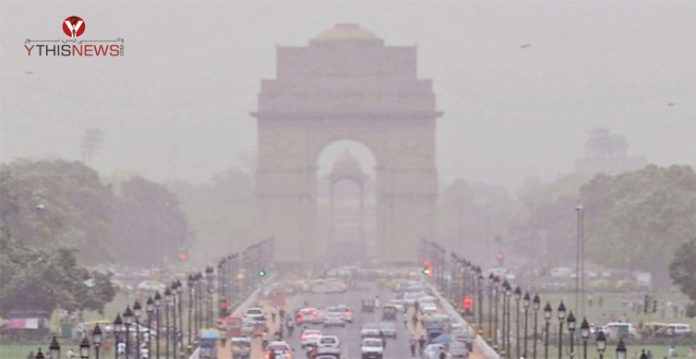With the air quality of the national capital rising consistently since the past several days, Delhi witnessed an astonishingly grey sunrise on Tuesday as the catastrophic smog blurred away the visibility of an individual.
According to experts, the AQ of the city will guide itself from ‘severe’ to ‘severe plus’, if people burn firecrackers this Diwali.
According to the Center; Pollution Control Board, the air quality observing posts situated in Jawaharlal Nehru Stadium, Najafgarh, MandirMarg, Punjabi Bagh, Pusa, Rohini, Patparganj, , Sri Aurobindo Marg and Okhla Phase 2 showed the indexes reaching 500.
Yes, everyone is thinking about #AirPollution right now but what matters is whether we're still thinking in March and June and August.#throwback ⬇️https://t.co/62qzAkURgV via @IndiaSpend #DelhiPollution #IndiaAQ pic.twitter.com/7uOhNvohNt
— Air Quality in India (@airqualityindia) November 10, 2020
Tuesday’s smog further threw itself as a hurdle as the visibility got diminished to just 300 meters. The data received from an official belonging to the India Meteorological Department (IMD) said the effects could be seen in the morning vehicle traffic on the roads with people unable to reach their destinations on time due to the slow movement of the automobiles and hazed air.
At 9 am, the national capital struck its air quality index at 487, fitting comfortably in the ‘severe’ group. Noida, the neighboring city went a step higher with 490, Ghaziabad trailing along with 476, Faridabad with 474, Gurugram had 469 and Greater Noida showed 467, also marking their seats in the ‘severe’ category.
According to the data, Tuesday marked the 6th consistent severe AQ day in Delhi. 2019’s November witnessed 7 such days in Delhi’s calendar.
PM2.5 contains particles that are eligible to enter into the blood circulation of a human body. Its levels were recorded at 605 g/m3 in Delhi-NCR, which are more than ten times that of the safe levels (60 g/m3).
The city also recorded its highest PM10 levels since 2018’s 847 g/m3 with 777 g/m3 at 8am on Tuesday. According to the CPCB, the PM10 levels need to be less than 100 g/m3 to consider a city in the safe zone in India.
Emergency bans can be imposed in a city where the PM2.5 and PM10 continue to remain higher than 300g/m3 and 500g/m3 respectively for more than 48 hours or 2 days. These measures, included in the Graded Response Action Plan for Delhi-NCR notified by the Ministry of Environment and Forests in 2017, can be in the form of bans on construction activities, car rationing system,s and bans on the entry of trucks.
Information received from experts and government agencies shows that the stubble burning effects were worsened due to the calm speed of the winds, not allowing it to segregate. Unless the fires from the fields are reduced to a great extent, early recovery isn’t possible.
V K Soni, the head of the IMD’s environmental research center, said a drastic improvement in the national capital’s AQ in the days to follow is extremely unlikely.
With Diwali just in the corner, the emissions from crackers can further upscale this AQI to ‘severe plus’ from ‘severe’, he said.
To stop this from becoming a reality, the NGR (National Green Tribunal) issued a complete ban on the sale and utilization/burning of every type of firecracker in the limits of NCR. This ban, imposed on November 9th’s midnight, will remain in place till the midnight of November 30th.
NGR, while issuing the ban, said that “celebration by crackers is for happiness and not to celebrate deaths and diseases”.
The Ministry of Earth Sciences’ air quality monitor, SAFAR, held similar opinions regarding the quick recovery as major improvement is required in the form of immediate cessation of stubble burning, as low dispersion from the calm winds has paved the way for the buildup of pollutants near the surface.
SAFAR’s data showed stubble burning contributing 38% to the total percentage of Delhi’s PM2.5 pollution.
Commission for Air Quality Management in the National Capital Region and Adjoining Areas highlighted the emergent requirement to impose the existing regulations, laws and SOPs to reduce air pollution for making it less severe than before. A review meeting is expected to be held on Tuesday for making the final decisions.
There will also be penalties and punishments for people who do not obey the ban put forth, said the Delhi Environment Minister GopalRai. This includes imprisonment for up to 6 years under the Air (Prevention and Control of Pollution) Act.







